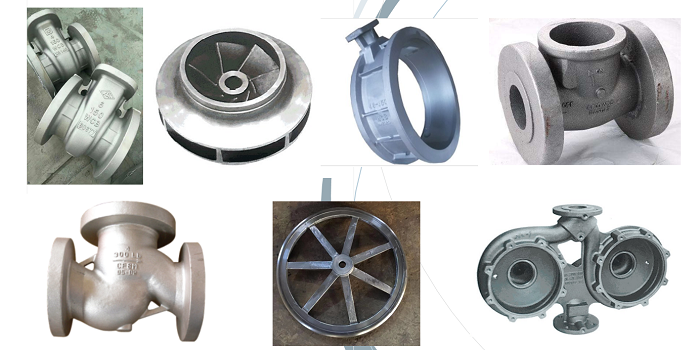Casting is a widely used manufacturing process for producing complex components. Among various casting methods, ductile iron casting, also known as nodular or spheroidal graphite iron casting, stands out as a popular choice. However, it is essential to compare ductile iron casting with other casting methods to understand its advantages and limitations fully. This article provides a comparative analysis between ductile iron casting and other casting methods.

- Ductile Iron Casting: Ductile iron casting offers several advantages, including high strength, good ductility, and excellent machinability. It provides a balance between strength and cost-effectiveness, making it suitable for a wide range of applications. Ductile iron castings exhibit good wear resistance, sound and vibration damping properties, and high thermal conductivity. The nodular graphite structure in ductile iron enhances its toughness and resistance to fatigue and fracture. However, ductile iron casting may have limitations in terms of weight compared to some other casting methods, as it is denser.
- Gray Iron Casting: Gray iron casting is another common casting method that differs from ductile iron casting in terms of its graphite structure. Gray iron castings have a flake graphite structure, which provides excellent thermal conductivity and vibration damping properties. They are relatively low cost, easily cast, and have good machinability. However, gray iron castings may have lower tensile strength and ductility compared to ductile iron, limiting their use in applications that require high mechanical properties.
- Investment Casting: Investment casting, also known as lost-wax casting, is a precision casting method that offers high dimensional accuracy and intricate detailing. It is suitable for producing complex components with fine surface finishes. Investment casting can produce castings with various materials, including steel, aluminum, and superalloys. However, investment casting is generally more expensive and time-consuming compared to ductile iron casting, making it more suitable for specialized applications that require exceptional precision.
- Sand Casting: Sand casting is one of the most versatile and widely used casting methods. It is a cost-effective process for producing large and heavy components. Sand casting can accommodate various metals and alloys, including ductile iron. It offers good design flexibility and can produce both simple and complex shapes. However, sand casting may have limitations in terms of surface finish and dimensional accuracy compared to investment casting or other precision casting methods.
- Die Casting: Die casting is a high-pressure casting method used to produce intricate and precise components with high dimensional accuracy. It is commonly used for manufacturing components made of non-ferrous metals such as aluminum, magnesium, and zinc alloys. Die casting offers excellent surface finish, tight tolerances, and high production rates. However, die casting may have limitations in terms of the size and weight of the components compared to other casting methods.
- Centrifugal Casting: Centrifugal casting is a specialized casting method used to produce cylindrical or tubular components. It provides uniform metal distribution and improved mechanical properties due to the centrifugal force involved in the process. Centrifugal casting is suitable for producing components such as pipes, cylinders, and rings. However, it may have limitations in terms of the complexity of the component shapes compared to other casting methods.
In conclusion, ductile iron casting offers several advantages such as high strength, good ductility, and cost-effectiveness. It is a versatile casting method suitable for a wide range of applications. While other casting methods like gray iron casting, investment casting, sand casting, die casting, and centrifugal casting offer their own unique advantages and limitations, ductile iron casting stands out as a reliable and widely used method for producing components that require a balance between strength, durability, and cost-effectiveness.
